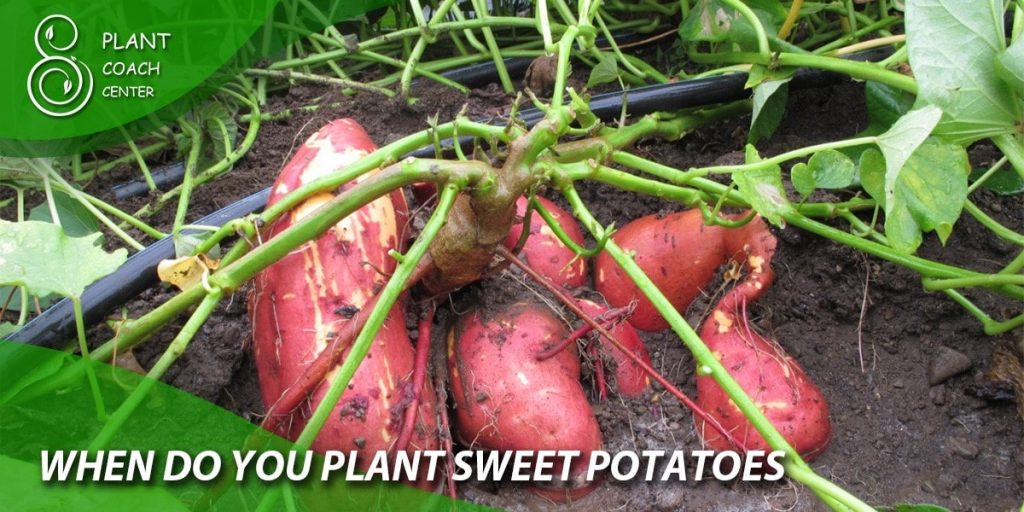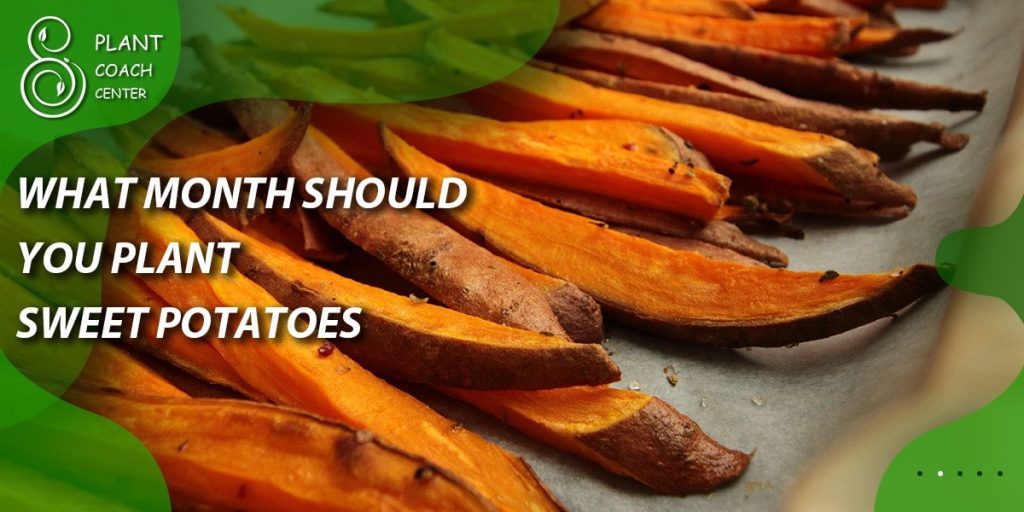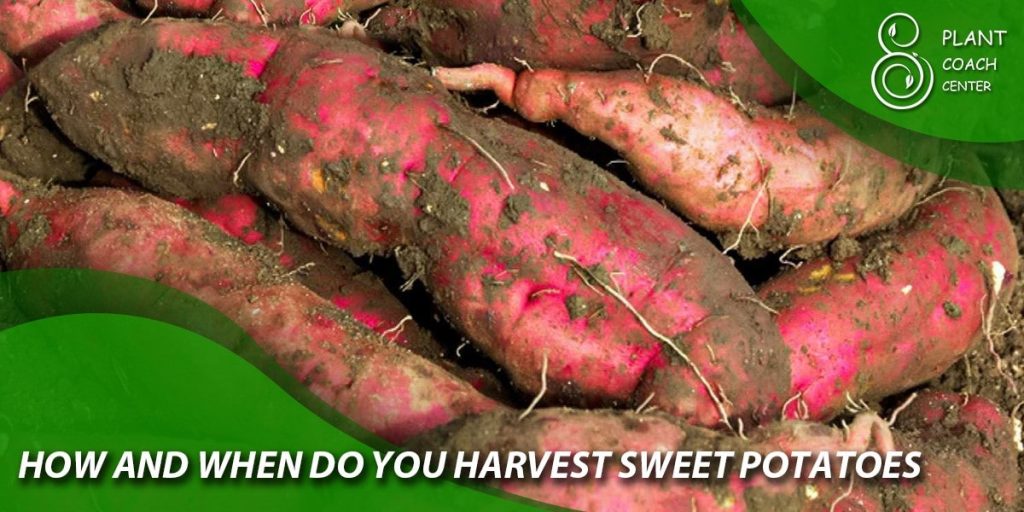When Do You Plant Sweet Potatoes?

Welcome to the world of sweet potato cultivation, where the Earth’s bounty meets culinary delight. As gardening enthusiasts, we journey through seasons and soil to uncover the age-old question: When is the ideal time to plant sweet potatoes?
This question isn’t just about sticking seeds into the ground; it’s a dance with nature’s rhythm and negotiation with the elements. The answer depends on various intertwining factors to create the perfect planting symphony. In this article, we delve into the intricacies of sweet potato planting timelines, exploring the delicate balance between soil temperature, climate nuances, and the plant’s natural growth cycle.
Whether you’re a seasoned gardener or a budding green thumb, understanding the science and art behind sweet potato planting will empower you to foster a flourishing harvest. So, grab your gardening gloves and join us as we unearth the secrets of when and how to plant these delectable tubers, ensuring a vibrant garden and a table filled with the wholesome goodness of homegrown sweet potatoes.
Seasonal Sweetness: Unveiling the Perfect Timing
When it comes to sweet potato cultivation, timing is everything. The journey begins with understanding the seasonal nuances that govern the planting process. Sweet potatoes thrive in warm weather, making it crucial to align planting with the right season.
In regions with distinct seasons, the best time to plant sweet potatoes is typically in late spring, after the danger of frost has passed and the soil has warmed up sufficiently. This allows the tubers to establish roots and foliage before the intense heat of summer sets in.
An early spring planting might be feasible for those in milder climates, where winters are gentler and frost less frequent. However, in areas where summers are scorching, a late spring planting could be preferable to avoid exposing young plants to excessive heat stress. The trick is to find the balance that suits your specific climate and micro-environment.
Moreover, consider the length of your growing season. Sweet potatoes require a relatively long growing period, ranging from 90 to 170 days, depending on the variety. If you’re in a region with a short growing season, choose quicker-maturing types or even start your sweet potato slips indoors to get a head start.
Nature’s Countdown: Understanding the Growing Cycle
Embarking on a sweet potato planting journey means embracing the intricate dance of nature’s growth cycle. To cultivate these delectable tubers successfully, one must grasp the stages that sweet potatoes navigate from planting to harvest.
The first act in this botanical performance is the sprouting of slips. These young shoots are grown from mature sweet potatoes and serve as the foundation for your crop. Mistakes develop roots and leaves as they mature, preparing for their garden transplant. Timing is critical here; ensure that your tags are both young and mature when you transplant them, striking a delicate balance for optimal growth.
Once nestled into the warm soil, sweet potato plants undergo a period of vigorous vegetative growth. Lush vines sprawl across the Earth’s canvas, soaking in the sunlight and converting it into energy through photosynthesis. This phase is essential for building the plant’s strength and storing energy in carbohydrates within the tubers below.
As the days gradually shorten and summer transitions to autumn, the sweet potato plant receives subtle cues from the changing environment. The once-energetic foliage begins to signal its readiness for the final act – harvest. This phase is where the magic of the growing cycle truly manifests. Gently unearth the tubers from the soil, handling them carefully to avoid bruising or damaging their delicate skin.
Understanding the natural cadence of the sweet potato’s growth cycle is akin to reading a captivating novel. Each chapter holds valuable insights into the plant’s needs and behaviors. By observing and respecting these stages, you can choreograph a harmonious journey from slips to a bountiful harvest, ensuring your sweet potatoes are nothing short of a natural masterpiece on your plate.

Frosty Dilemma: Navigating Cold Weather Challenges
While sweet potatoes thrive in warmth, the arrival of cold weather presents a frosty dilemma for gardeners. Frost can wreak havoc on these tender plants, stunting growth and causing irreparable damage. However, with careful planning and proactive measures, you can successfully navigate the challenges of chilly temperatures and safeguard your sweet potato harvest.
To protect your sweet potato vines from frost, monitoring weather forecasts and keeping track of frost dates in your region is essential. Young plants are particularly vulnerable, so delaying planting until after the last frost date is prudent. If an unexpected late frost is on the horizon, consider using frost blankets, cloths, or plastic sheets to cover your plants overnight. This protective layer traps heat from the ground, preventing frost from forming on the plants.
In colder climates, where frost is a recurring threat, you might explore using raised beds or planting in containers. These methods elevate the plants, making them less susceptible to ground-level frost. Additionally, using mulch around the base of your sweet potato plants can help regulate soil temperature and provide insulation against extreme cold.
Should an early frost catch you by surprise and your sweet potato foliage turns black, don’t despair just yet. Leave the plants untouched for a few days to gauge the extent of the damage. Sometimes, the plants might recover if the frost hasn’t penetrated too deeply. If they don’t rebound, you can still salvage the sweet potatoes by carefully harvesting them and curing them indoors.
Preparedness is vital in the delicate dance between cold weather and sweet potato cultivation. By staying vigilant, employing protective strategies, and adapting to your local climate, you can outwit frost’s chilling touch and ensure that your sweet potato plants flourish despite the wintry challenges.
Warm Soil, Happy Roots: Soil Temperature Guidelines
When planting sweet potatoes, paying attention to soil temperature is akin to offering a warm embrace to the roots seeking sustenance below. The warmth of the soil plays a vital role in determining the success of your sweet potato crop, as it directly influences root development, growth rate, and overall plant health.
Sweet potatoes are tropical plants that thrive in warm climates. Planting them in too cold soil can lead to stunted growth, poor root development, and a lackluster harvest.
The magic number to remember is 50°F (10°C) – the minimum soil temperature at which you should consider planting your sweet potatoes. However, aiming for slightly higher temperatures, around 60-65°F (15-18°C), can ensure more vigorous growth and better yield.
To accurately gauge soil temperature, it’s recommended to use a soil thermometer. Place the thermometer about 4 inches (10 cm) deep in the soil where your sweet potato slips will be planted. Take measurements over several days to get a consistent reading and ensure the soil has warmed up adequately before planting.
If your region tends to have more relaxed springs or a slow warming process, you might consider using black plastic mulch to help raise soil temperatures. The dark color of the plastic absorbs and retains heat from the sun, creating a more favorable environment for your sweet potatoes to thrive.
Remember, planting sweet potatoes when the soil is warm is like rolling out the red carpet for their roots. By being patient and allowing the ground to reach the right temperature, you’re setting the stage for a flourishing sweet potato garden that will yield satisfying results.

Moonlit Planting: Exploring Lunar Gardening Myths
In gardening folklore, the moon has long been believed to hold sway over the success of crops, including sweet potatoes. Moonlit planting, an ancient practice, suggests that specific moon phases can influence plant growth, from germination to harvest. While this concept is intriguing, exploring whether there’s any scientific basis for these lunar gardening myths is essential.
Proponents of moonlit planting argue that the moon’s gravitational pull affects the moisture levels in the soil, potentially impacting seed germination and root development. According to this belief, planting during a waxing moon (when the moon is growing from new to complete) enhances above-ground growth, while a waning moon (decreasing from complete to new) is considered suitable for below-ground crops, like sweet potatoes.
However, modern scientific research has cast doubt on the direct influence of lunar phases on plant growth. While the moon does exert gravitational forces on Earth, these forces are relatively weak and are unlikely to significantly affect soil moisture or plant development. Instead, factors like temperature, sunlight, and soil quality play more substantial roles in determining plant growth and health.
While moonlit planting may not have a solid scientific basis, there’s no denying the beauty and rhythm of aligning gardening tasks with the moon’s cycles. Gardening itself is a profoundly personal experience, and if following lunar phases brings you a sense of connection and mindfulness in your garden, there’s no harm in trying it out. Remember that the moon’s influence might be more metaphorical than literal regarding sweet potato cultivation.

Adapting to Your Zone: Tailoring Planting Dates
In the grand symphony of gardening, one of the most crucial notes to hit is timing – specifically, planting timing. The ideal time to plant sweet potatoes can vary significantly depending on your USDA hardiness zone. These zones provide a valuable guide to understanding your region’s climate and its impact on your gardening endeavors.
Early spring planting can be a fruitful choice for those in warmer zones, where the growing season is long, and frost is a rare visitor. Zones 8 to 11 often offer the luxury of starting sweet potato slips outdoors as early as March, allowing ample time for robust growth and a bountiful harvest.
Conversely, you’ll need to exercise patience if you reside in cooler zones with shorter growing seasons (zones 3 to 6). Starting your sweet potato slips indoors several weeks before your last frost date can give them a head start. Transplant them outdoors only after the threat of frost has subsided, and the soil has warmed up.
To further tailor your planting dates, consider microclimates within your garden. South-facing slopes tend to warm up earlier in the spring, making them ideal spots for planting. Additionally, row covers, or cloths can provide a mini greenhouse effect, creating warmer conditions that encourage growth.
Ultimately, understanding your zone empowers you to adapt and optimize your sweet potato planting strategy. It’s a testament to the resilience and adaptability of both plants and gardeners as we navigate our regions’ unique challenges and advantages. By harmonizing the song of your sweet potato planting with your hardiness zone’s melody, you’ll cultivate a garden that thrives in tune with nature’s rhythms.

Conclusion
As we bid adieu to our exploration of sweet potato planting, we find ourselves equipped with insights that bridge ancient wisdom with modern gardening practices. Determining the opportune moment to sow these luscious tubers involves a delicate dance with seasons, soil, and even the moon.
While lunar gardening myths add a touch of mystique, practical considerations like soil temperature, local climate, and hardiness zones ultimately guide our hands in the garden. As you embark on your sweet potato journey, let your decisions be driven by a synergy of tradition and science, enhancing the chances of a fruitful harvest.
Remember, whether you’re in the warmth of Zone 9 or the crispness of Zone 5, the guidance provided here, along with the resources available on PlantCouchCenter.com, empowers you to craft a garden symphony that harmonizes with the very heartbeat of nature. So, grab your shovel, embrace the changing seasons, and watch your sweet potato dreams take root and flourish. Happy planting!
Can I plant sweet potatoes in cold climates?
Yes, you can! Starting slips indoors before the last frost and using protective measures can help sweet potatoes thrive in colder zones.
Does the moon phase affect sweet potato planting?
While lunar gardening is intriguing, scientific evidence on moon phase impact remains limited. Focus on practical factors like soil temperature and climate.
How do I know the right time to plant sweet potatoes?
Determine your USDA hardiness zone, monitor soil temperature with a thermometer, and consider local climate patterns for the perfect planting window.







